Marudi Airport (MUR) isn’t a very busy place. According to the March 2022 schedule posted behind the terminal’s check in counter, there are a maxiumum of 7 Rural Air Service (RAS) flights in and out of the airfield per day, with between 3 to 4 per day to and from Miri. One of these was to be my way back to Miri.
MASwings, a subsidiary of Malaysia Airlines, is the sole operator of the RAS routes in Sarawak and Sabah. The airline operates the majority of its RAS routes with relatively young Viking DHC-6 Twin Otters. These rugged birds are perfectly suited for RAS operations, being capable of flying in and out of the remote, mountainous airstrips with very short runways.
I had an enjoyable flight out of Miri on the outbound sector, and I was interested to see how a departure from a small, rural airfield like MUR would contrast with bigger facilities.
Buying my tickets
The RAS flights are operated by MASwings, a subsidiary of Malaysia Airlines. Tickets may be booked either directly on the MASwings website or through the Malaysia Airlines website.
I paid RM 145.00 (incl. charges and taxes) for a return ticket between Miri and Marudi.
Departure experience from Marudi Airport
MUR is incredibly small, boasting a runway less than a kilometre long and a single storey terminal building with an attached ATC post. The terminal is linked to the town centre by road, and a well built pedestrian walkway running alongside the road also gives it excellent pedestrian access to Marudi town.
I took advantage of this great walkability and did a 10 minute leisurely stroll from the waterfront to the terminal, arriving around 1.5 hours before my flight.
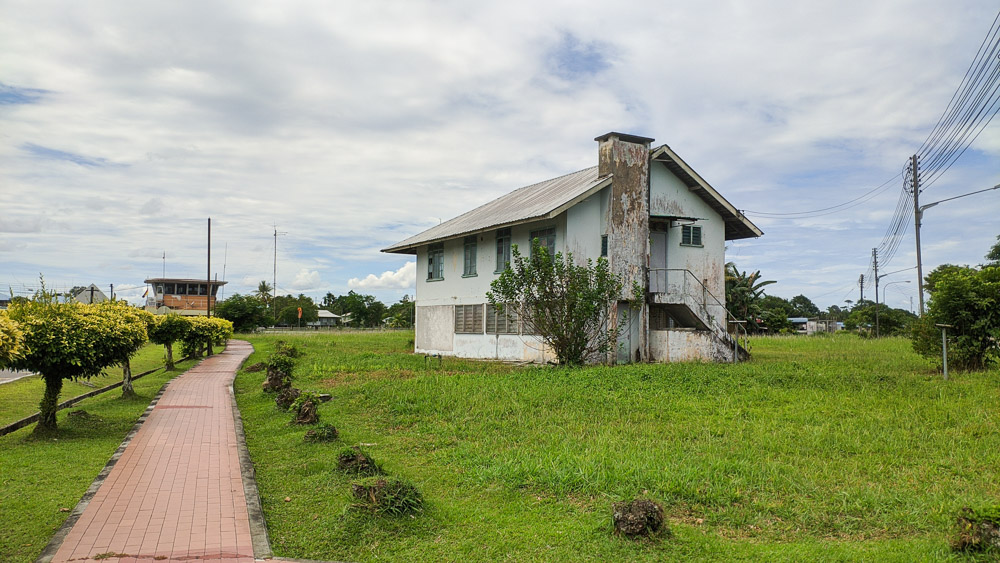
Landside at Marudi Airport
Check in at MUR is served by a single counter. There are no conveyor belts at MUR, so baggage being checked in are directly placed on an electronic weighing scale next to the counter to have their weight recorded. Passengers are then required to weigh themselves together with their hand luggage for weight balancing purposes. This is standard procedure for small aircraft like the Twin Otters.
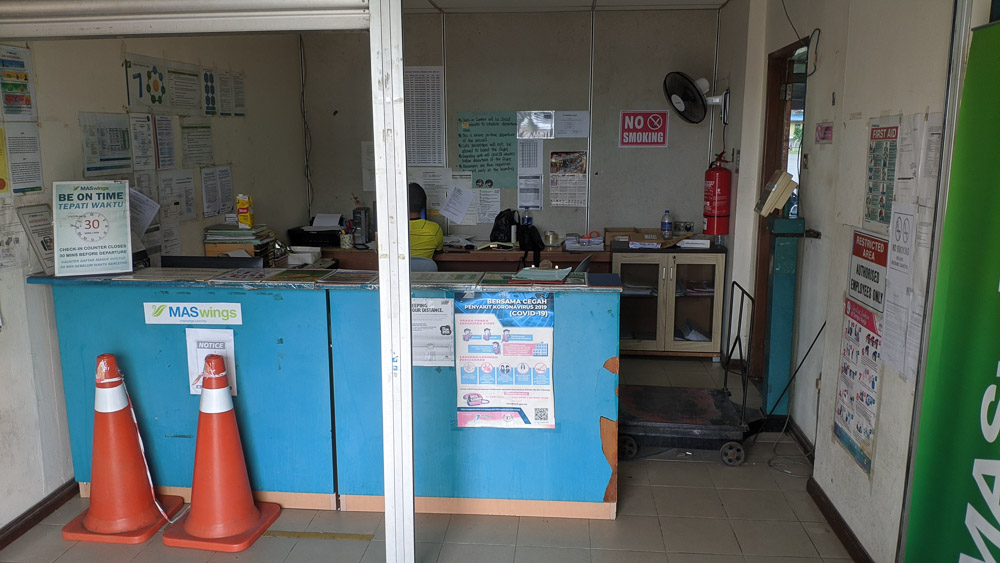
As I had already checked in for both legs at Miri in the morning, I wasn’t able to experience the check-in process at MUR for myself.
The rest of the landside area of the terminal is incredibly spartan. There is a bench running the length of the wall opposite the check in counters, some offices for security officers, and also a set of toilets for both genders. As I’d arrived well ahead of time for my 4:00 pm flight, I simply plonked myself on the bench and scrolled Reddit – there is no WiFi in the terminal, but Marudi boasts good 4G coverage.
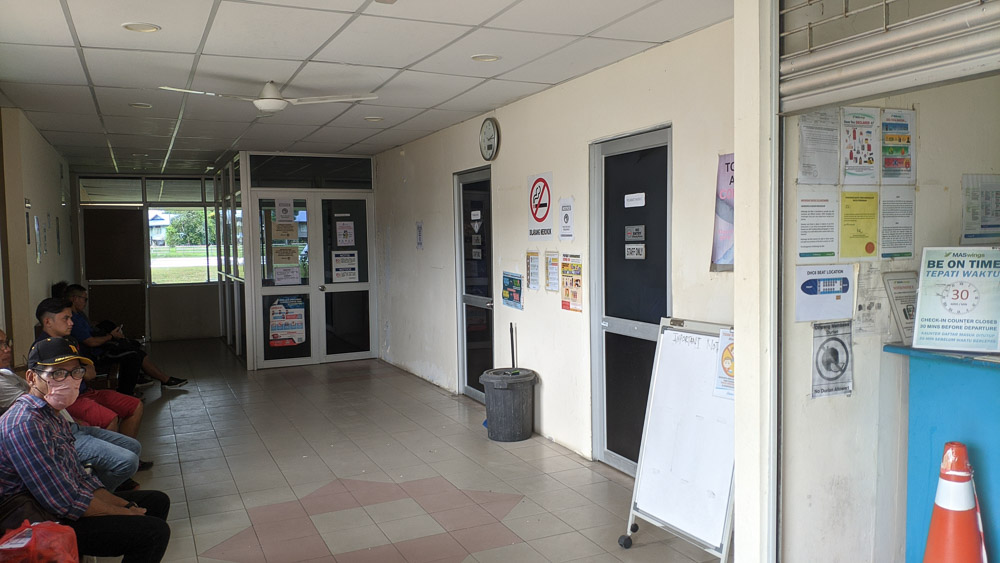
If you like planespotting, Marudi Airfield is a great place to do it. The pedestrian walkway runs along the length of the runway, and it is possible to catch the Twin Otters as they make their final approach over your heads, or as they do their short takeoff run out of Marudi. There is also a spot on the other side right next to the apron that puts you in close proximity to the Twin Otters on the ground. Don’t do anything stupid, though.
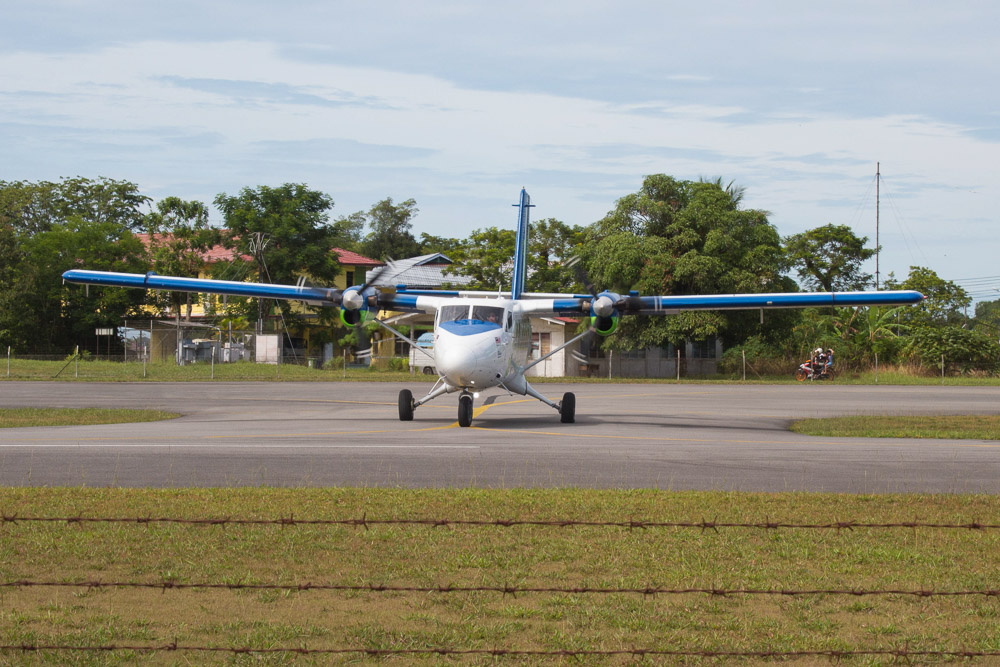
Around an hour before departure, the doors to the gate waiting area opened and the security officer invited waiting passengers in to enjoy the cooler air in the well ventilated gate room. This was already shaping up to a relaxed ambience that you won’t get at major airports.

There was a security check right at the entry to the gate, consisting of the aforesaid officer and a metal detector. Interestingly enough, the metal detector wasn’t used and my knapsack was checked manually by the officer.
With security cleared, I settled down in the well ventilated waiting room. The room was spartan and consisted of a few rows of long benches and windows that opened directly out onto the apron with a great view of the runway. This was a very different scene than gate areas at most airports, and for a second it seemed like I could close my eyes and imagine that I was waiting to board an express bus.
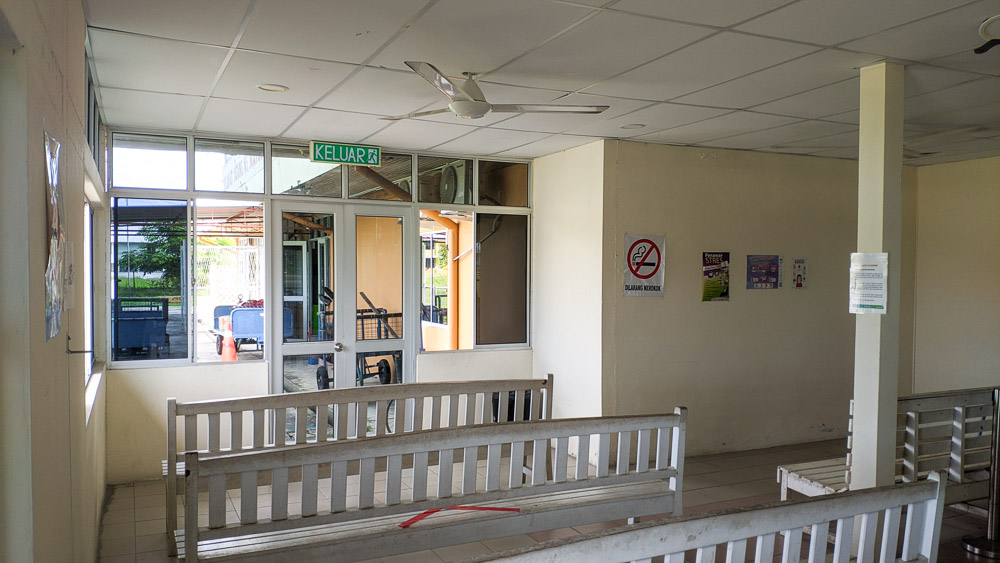
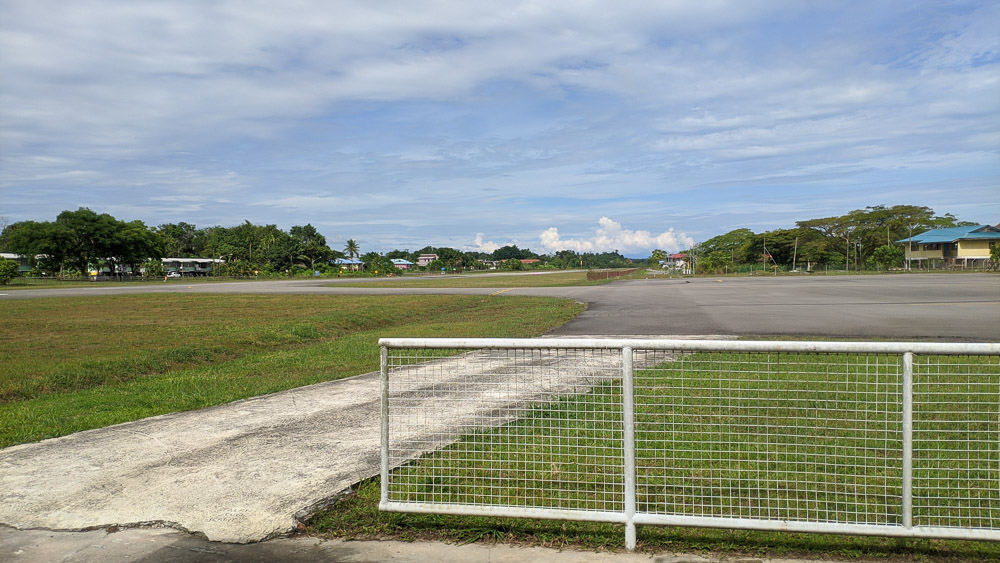
To be frank, though, the terminal is antiquated despite the charm. A refurbishment might be in order to bring the place up to date.
Our aircraft, a Twin Otter named “Lawas” after the eponymous town in northern Sarawak, arrived just after 3:00 pm on the outbound flight from Miri. Thanks to the open window, I had a great view of our aircraft’s arrival and taxi into the apron.
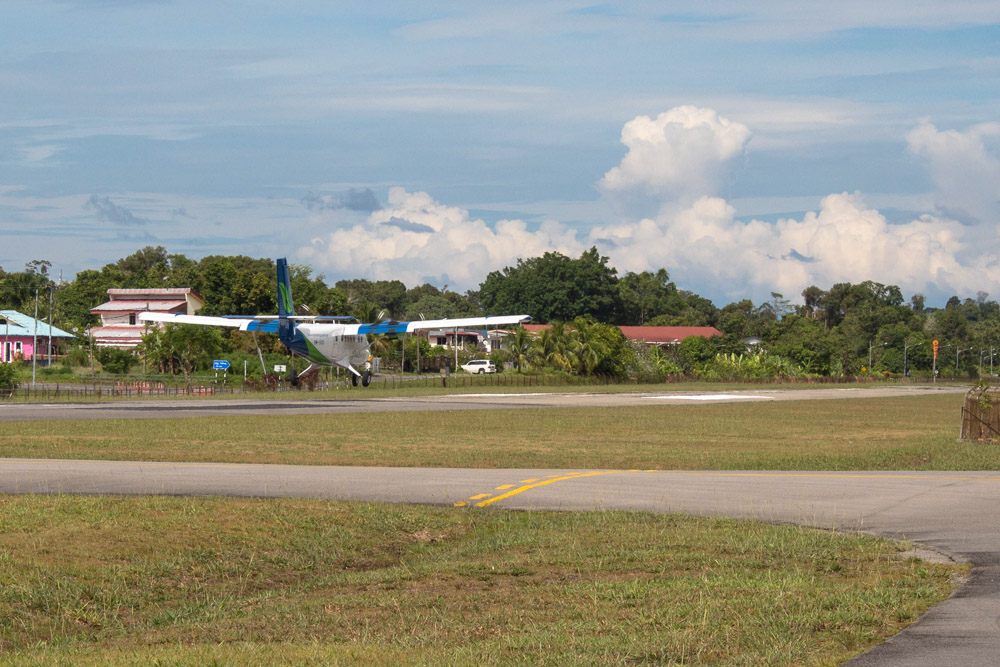
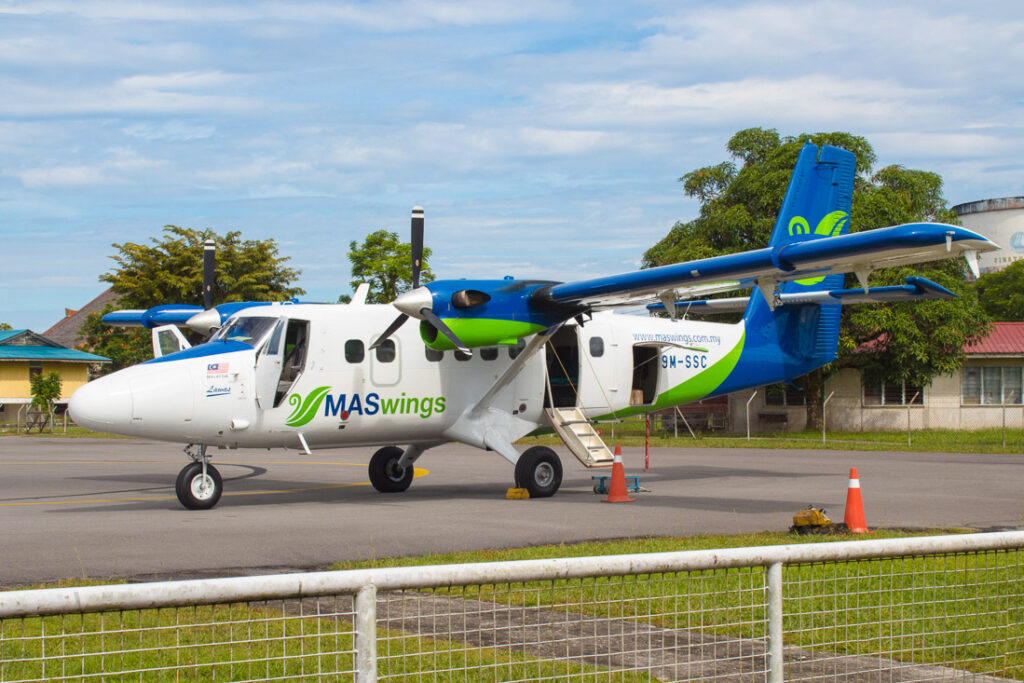
Here is where things got interesting. With all departing passengers accounted for, the luggage for the inbound to Miri loaded, and the preflight preparations completed, it seems our pilots decided that it was a great day to beat the schedule. Boarding was called and all 4 passengers trooped out to the tarmac.
And that is how we ended up departing MUR half an hour ahead of schedule.
Boarding the Twin Otter at Marudi Airport
Boarding at MUR is as straightforward as the arrivals procedure. With the aircraft parked so near to the terminal, you can go from gate to seat in 2 minutes.
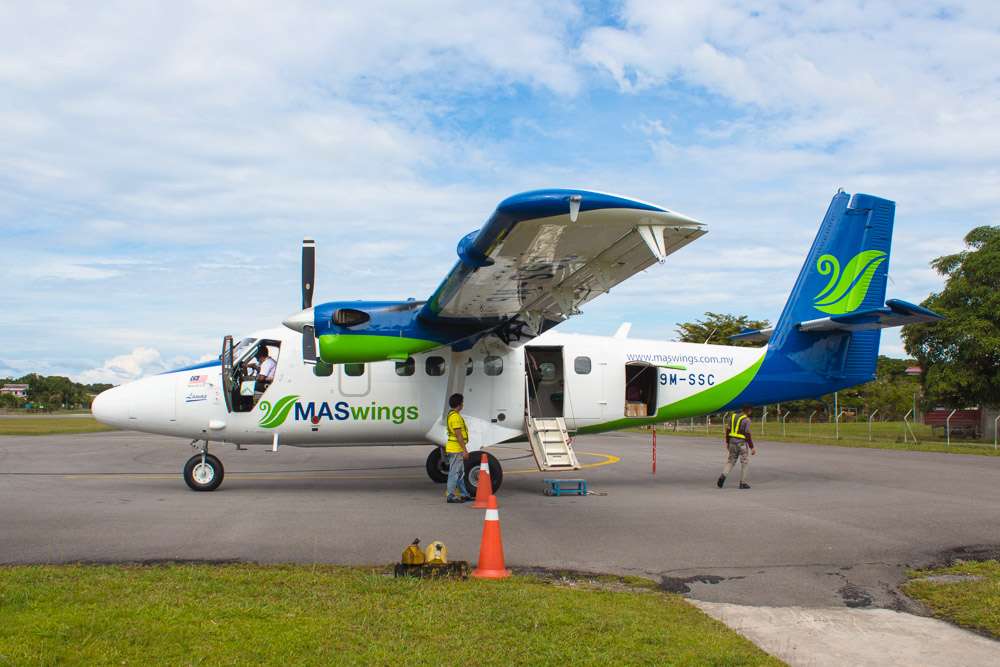
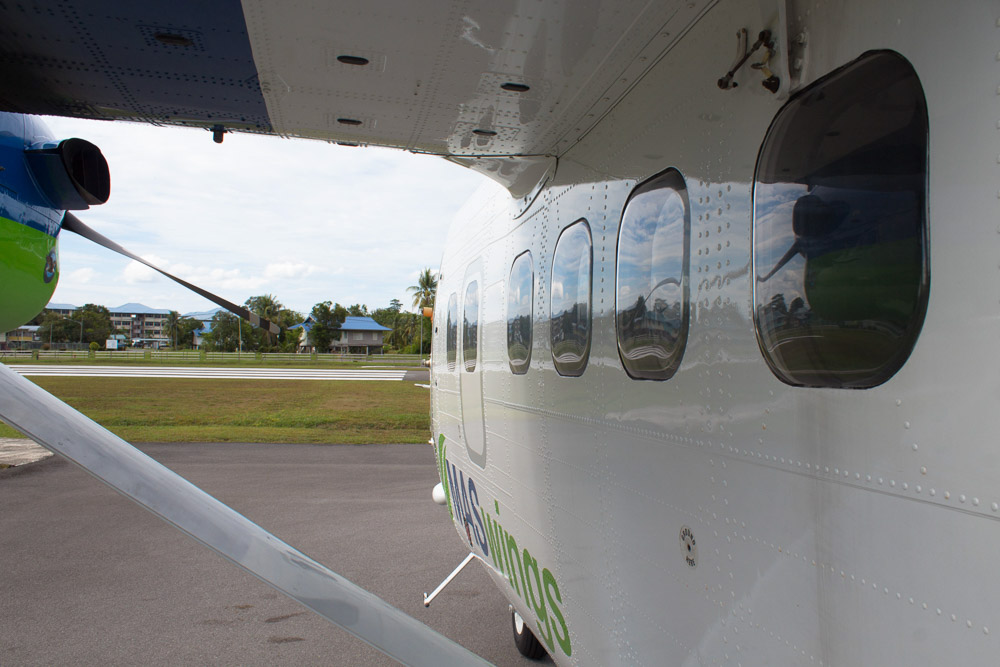
It was a nice sunny evening and the ground staff were very patient about my photo-taking. I really liked the relaxed atmosphere!
STOL departure from Marudi Airport
With only 4 of us in the cabin on the flight, the doors were soon closed and the pilots took their seats. The First Officer gave us the usual welcome announcement, though unfortunately simultaneously as the twin Pratt & Whitney engines were started up, so none of us could actually hear anything.
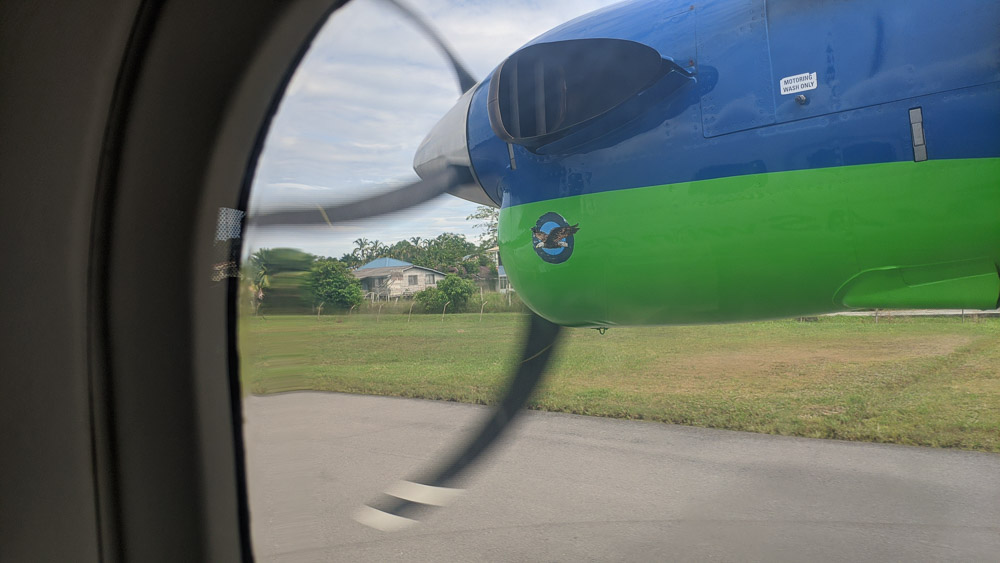
Our takeoff was from runway 28 on the far end from the terminal building. The pilots backtracked the aircraft along the runway and made the 180 degrees turn to line up for departure. The engines were then brought up to full power with the brakes on, with the cabin walls steadily vibrating in unison with the engines.
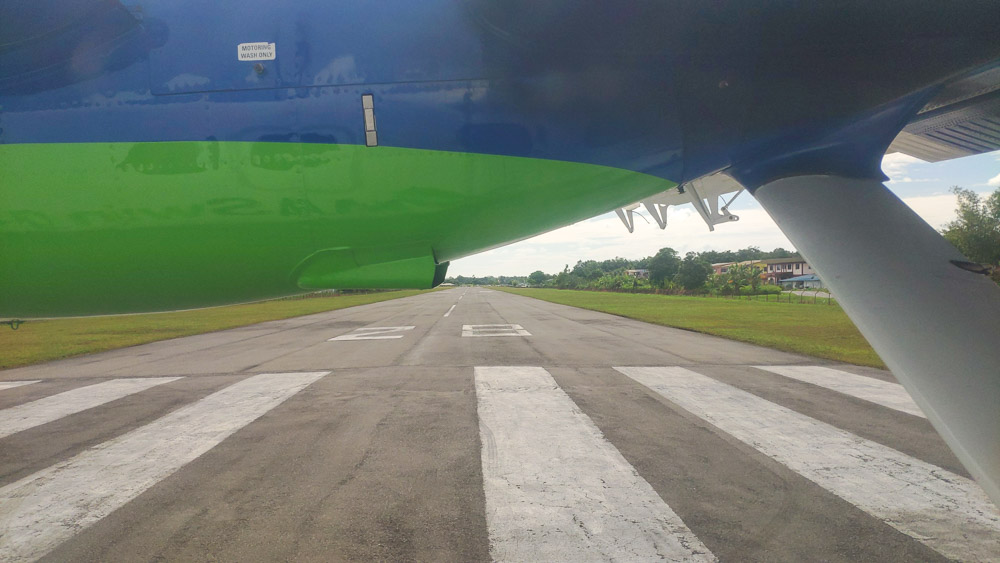
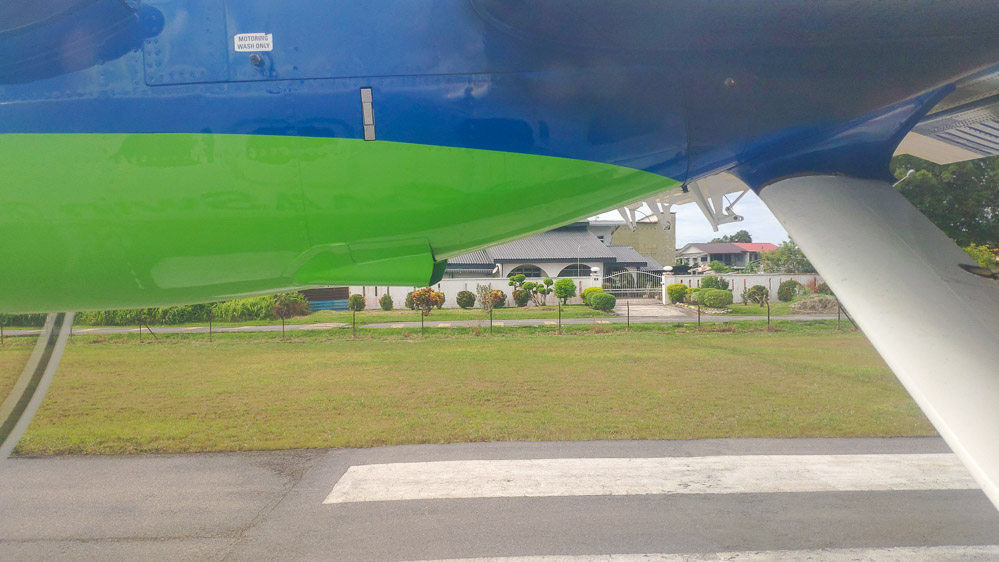
Then the brakes were released and our little aircraft rocketed forward, pushing us back into the seats. We quickly gained speed as the houses along the runway whizzed by at increasing rate. The aircraft then pitched up and rocketed straight up into the sky over Marudi town and the River Baram.
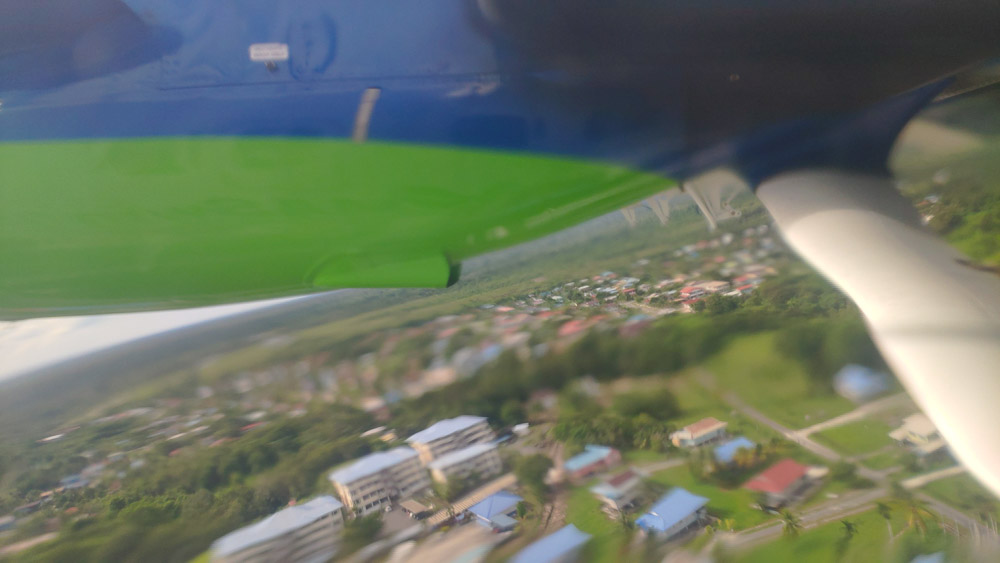
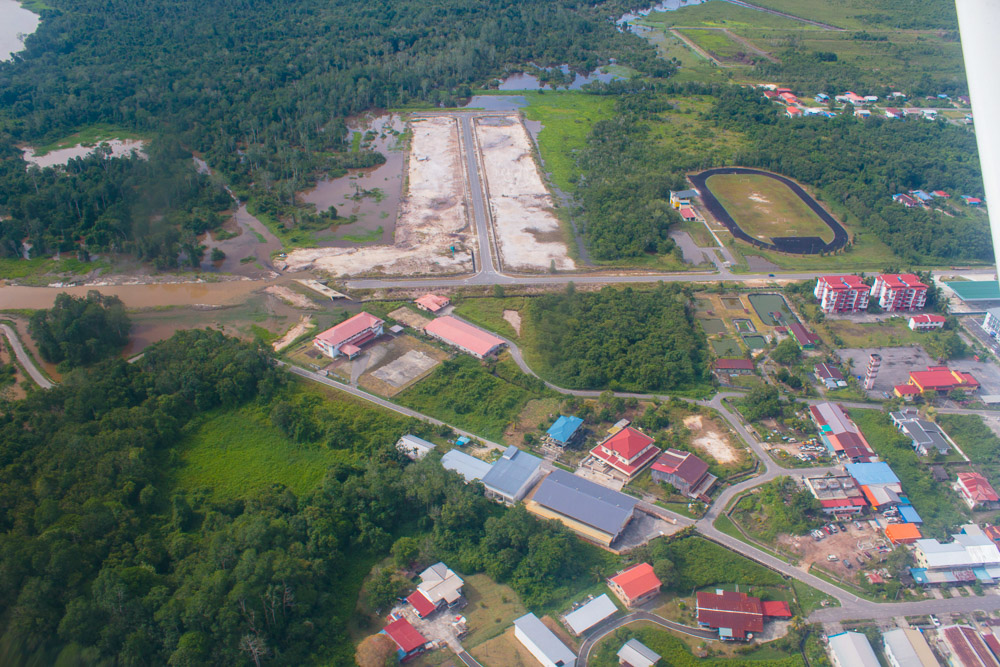
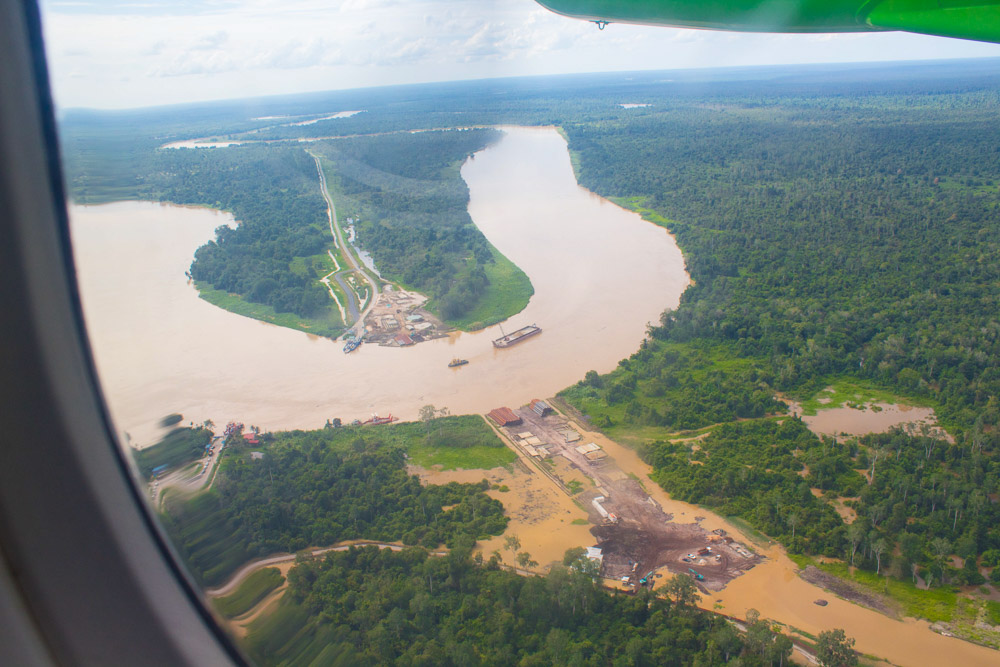
The small size of the aircraft also meant that its nose-up angle during the climb out was very noticeable.
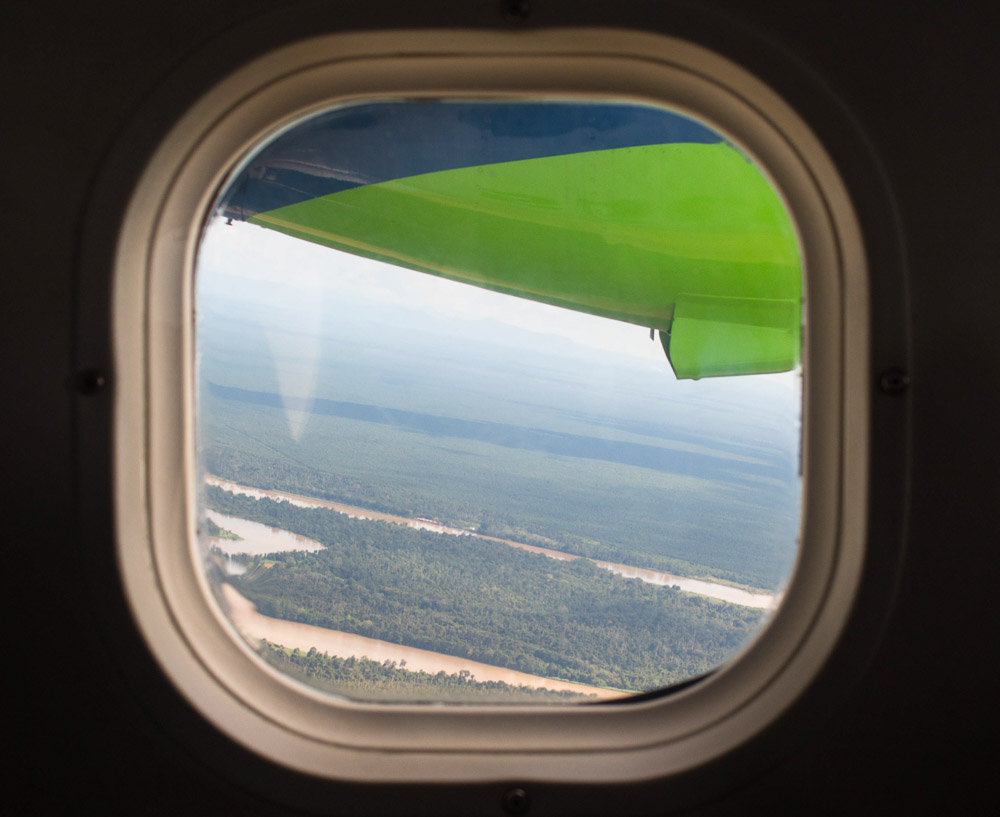
I later looked up the airfield’s specifications online and discovered that the whole takeoff run had taken less than a kilometre. Very, very impressive.
Cabin & Onboard Amenities
With a job scope of flying to remote and hard-to-reach places, Twin Otters aren’t exactly the pinnacle of luxury . The cabin was spartan and had minimal frills – save for the offset personal air vents, there are no toilets, armrests, seat-back tables (there is no catering onboard), and no flight attendants onboard the Twin Otter flights.
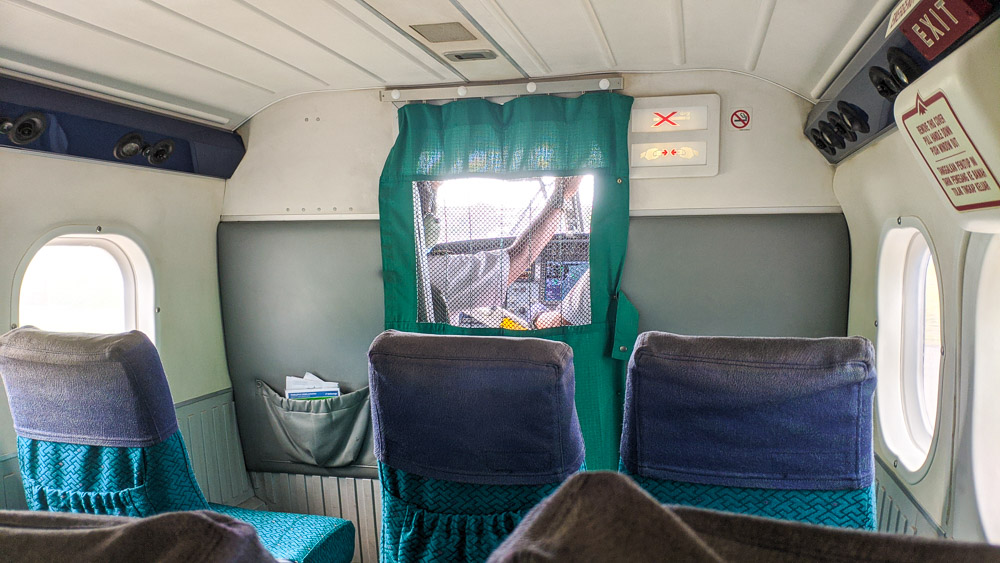
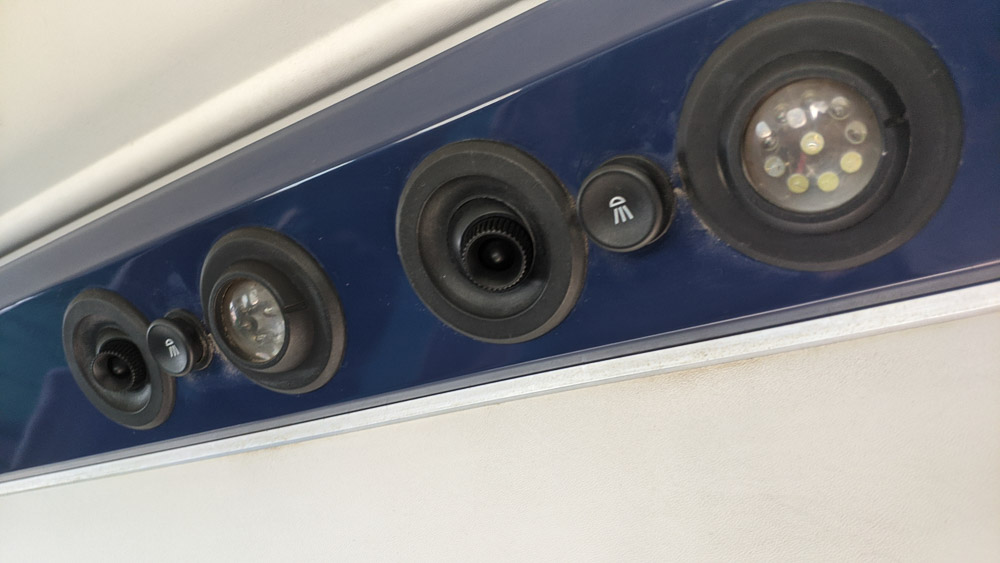
The 19 seats onboard were basic seats laid out in a 1 – 2 configuration with a row of 3 seats at the rear. With only 4 passengers, all of us had free reign over our seats of choice, and it was great to have the seat next to me empty for the entire flight.


As with 9M-SSA on the outbound, the seats onboard were upholstered in the fabric covers last seen on MH’s old B747-400s and B777-200ERs, now all sadly retired. It was a bit of a blast from the past, and the intricate patterns gave the cabin a bit of a refined air.
Legroom, as expected, was minimal. This wasn’t a problem for the short 20 minute hop to Miri.
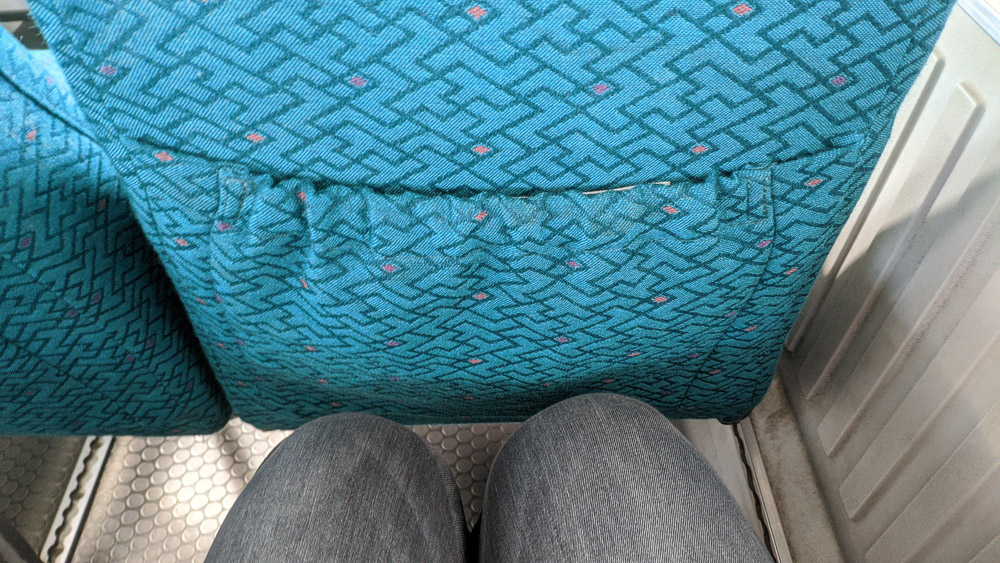
I didn’t expect any catering onboard for the Twin Otter flights, but on the outbound from Miri earlier in the morning the ground staff had handed out packs of sanitising wipes, salted peanuts, and a bottle of water. This wasn’t the case when we departed Marudi, but it’s not a big deal for a flight this short, really.
The view outside – Northern Sarawak from the air
As with the outbound flight, the IFE offering on this flight was limited to admiring the great views of northern Sarawak from the low cruising altitude.
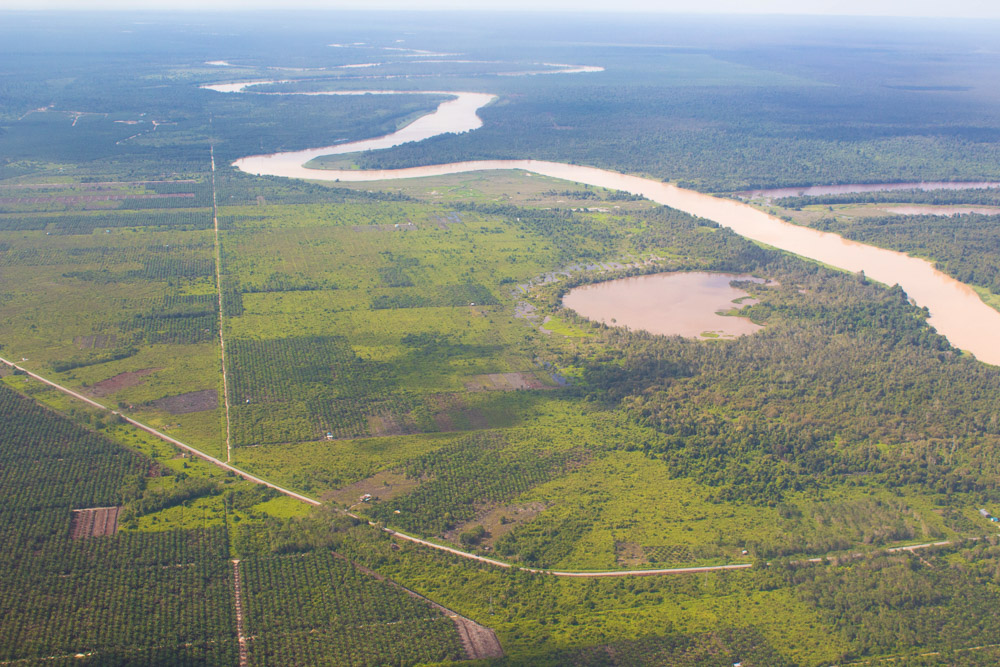
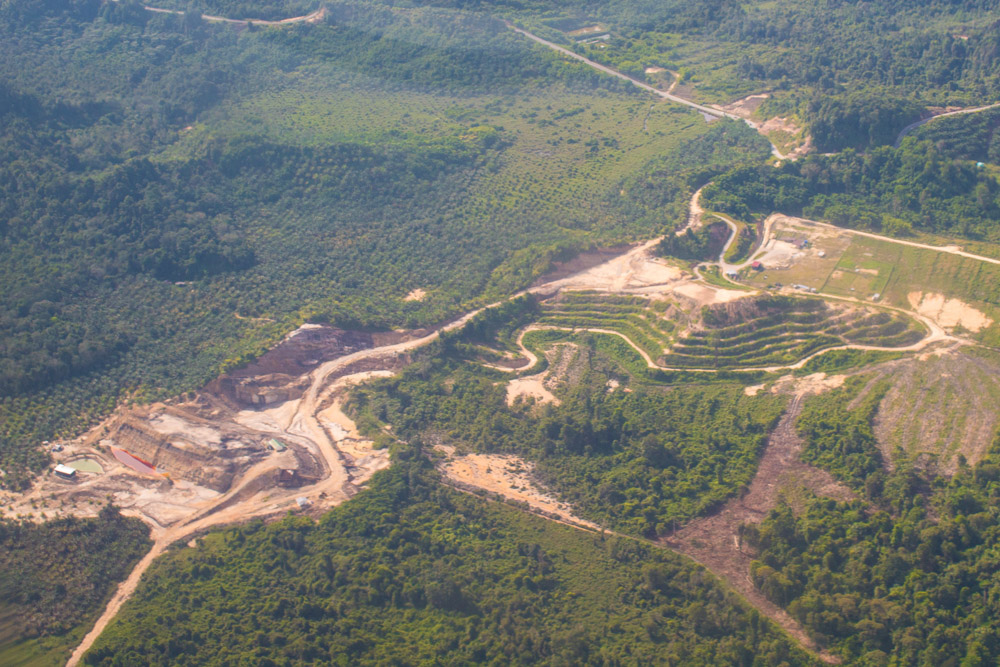
Arrival at Miri Airport
The approach and landing experience turned out to be another demonstration of the Twin Otter’s agility. We approached Miri Airport (MYY) from the northeast abeam to runway 20 before making a left turn to fly downwind along the runway.
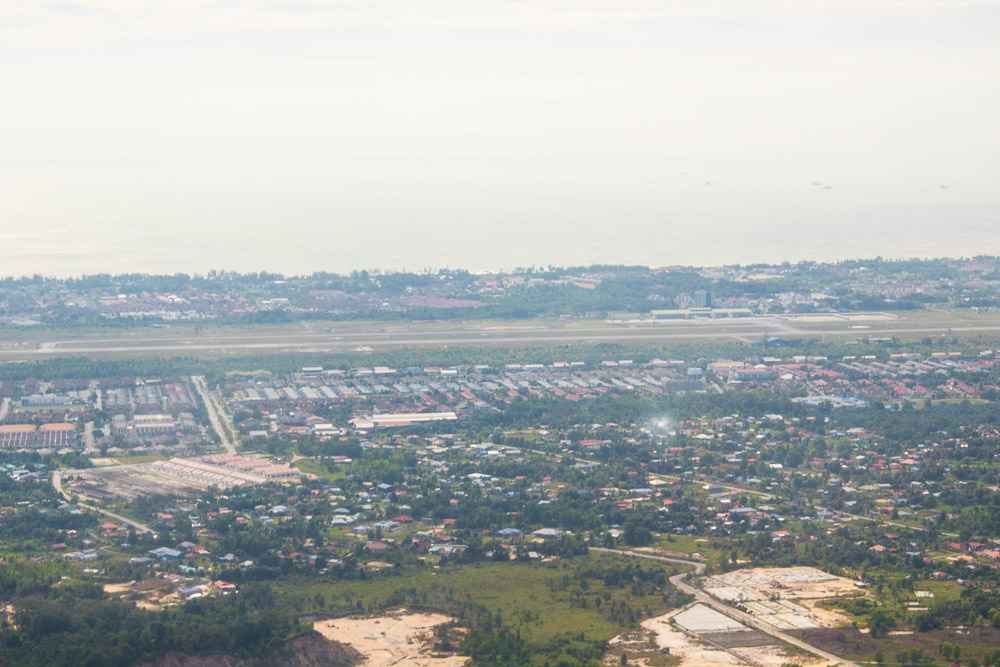
We were placed in a stack abeam from the runway 02 end of MYY, and our pilots then descended as we circled in the stack. This had the effect of bleeding off our speed and height in preparation for final approach.
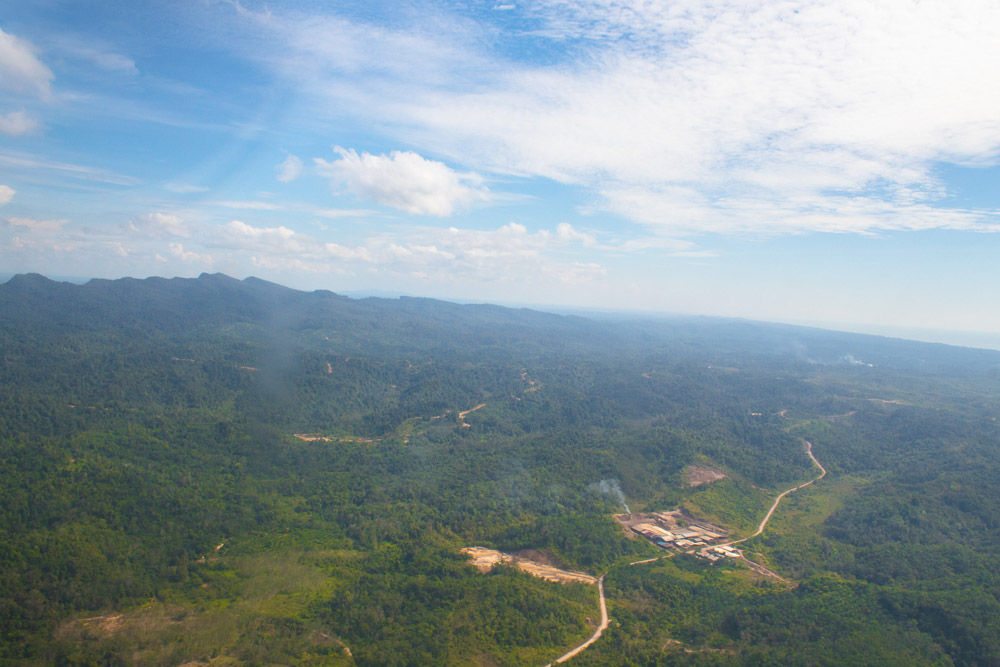
Our aircraft then exited the holding pattern to line up for final approach. This essentially involved a tight, almost 45 degree right turn to line up with runway 02.
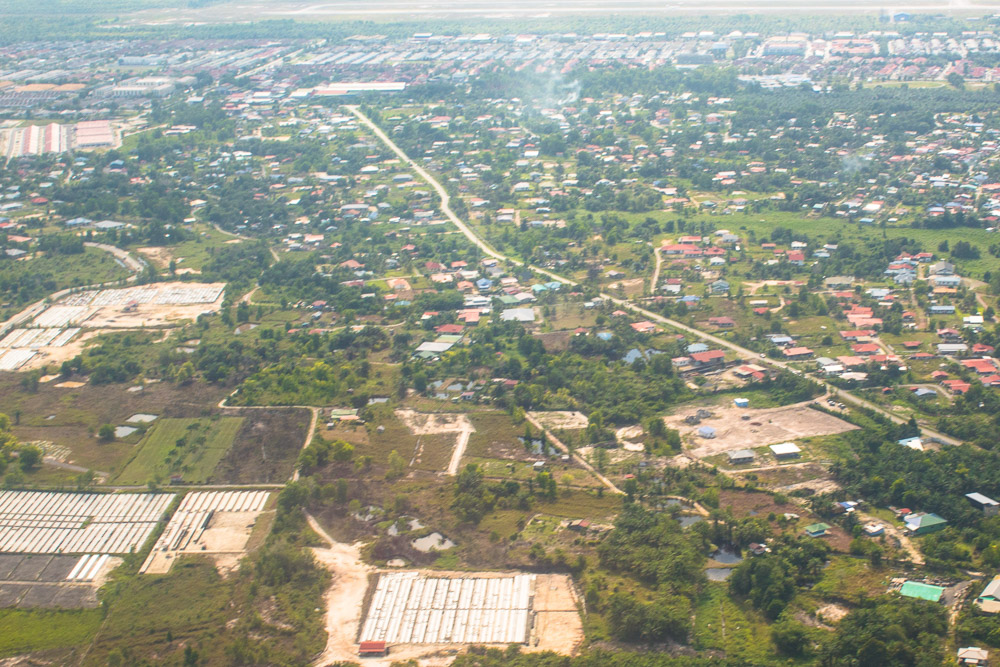
As the RAS tarmac was on the far end of the apron, our pilots let the aircraft float a bit before planting the aircraft firmly on the runway.
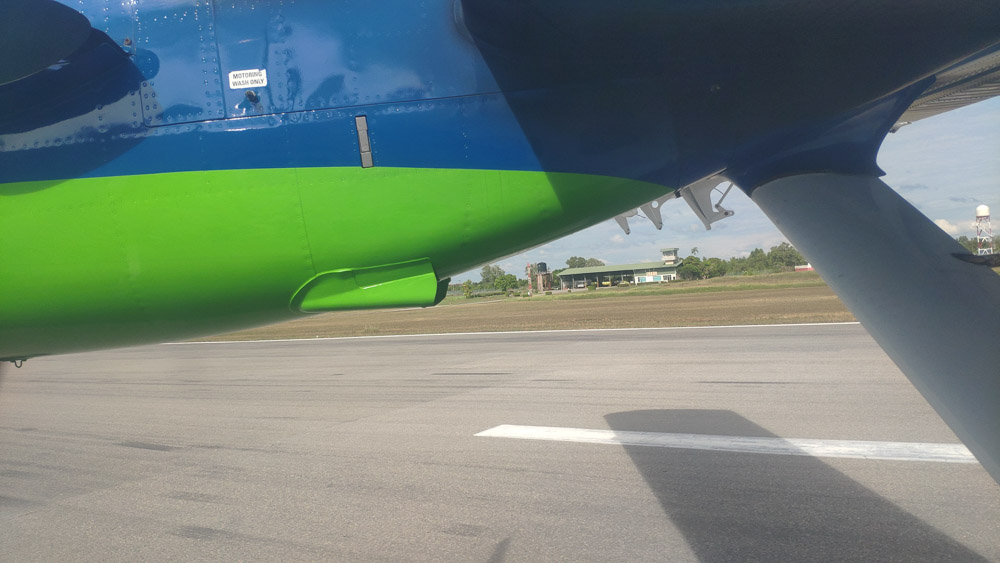
The disembarking process was, again, a relaxed affair as the pilots thanked us for flying with them today while they completed their final checklists.
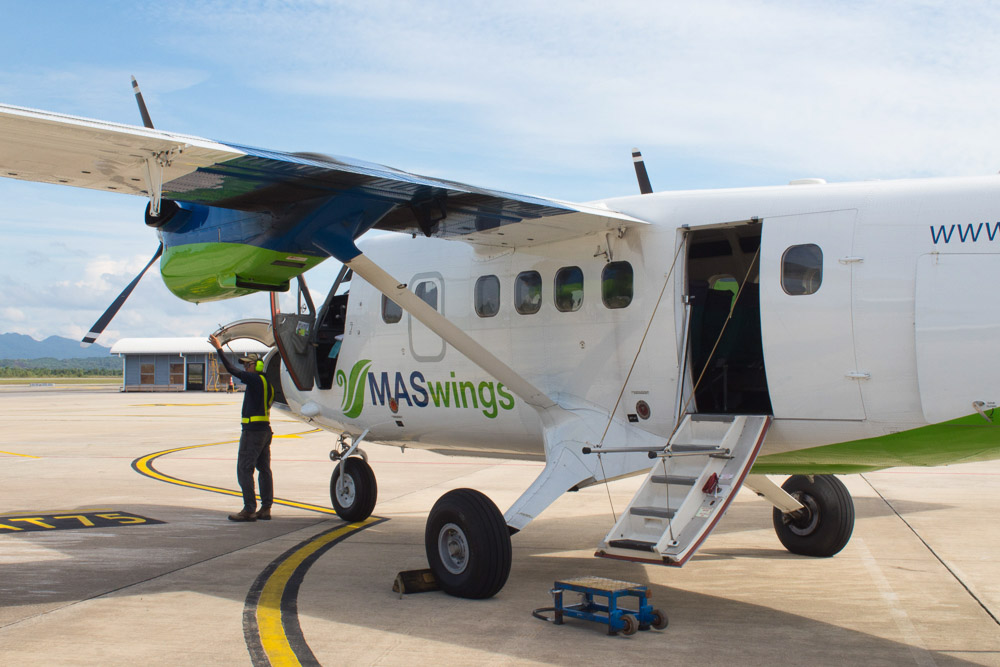
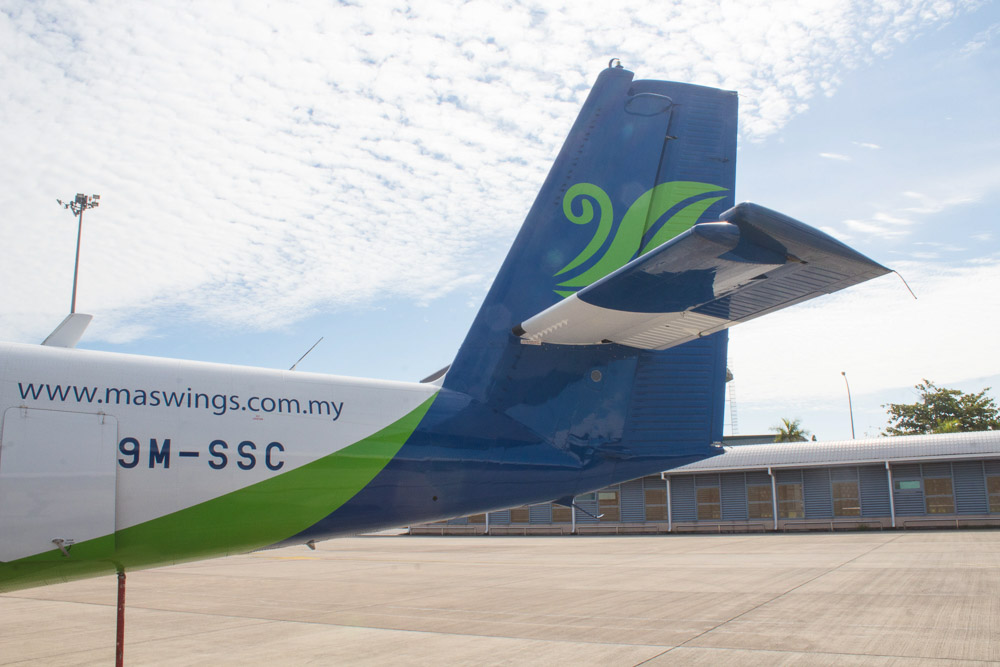
We then began the long walk back to the terminal, a repeat of the walk that I’d done earlier in the morning.
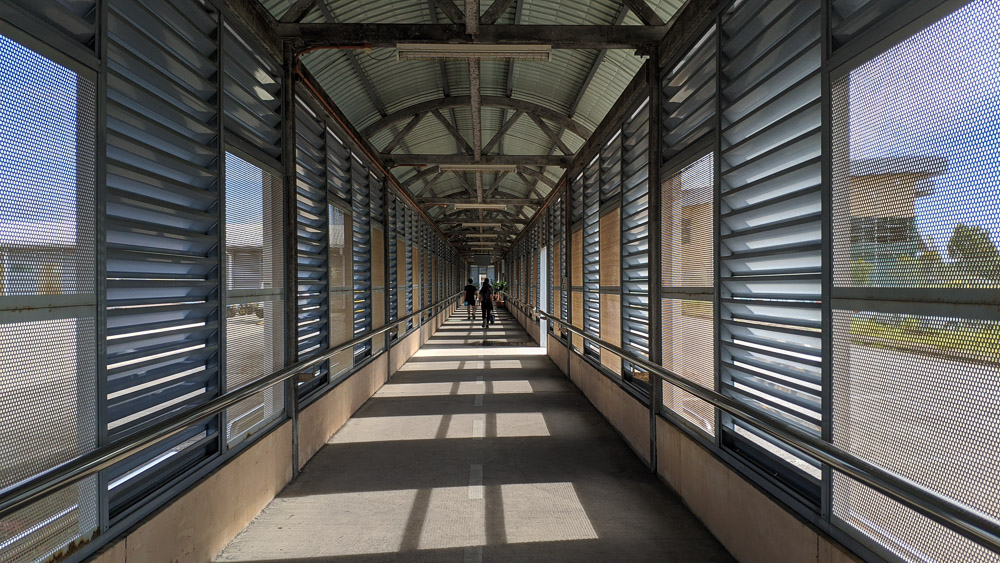
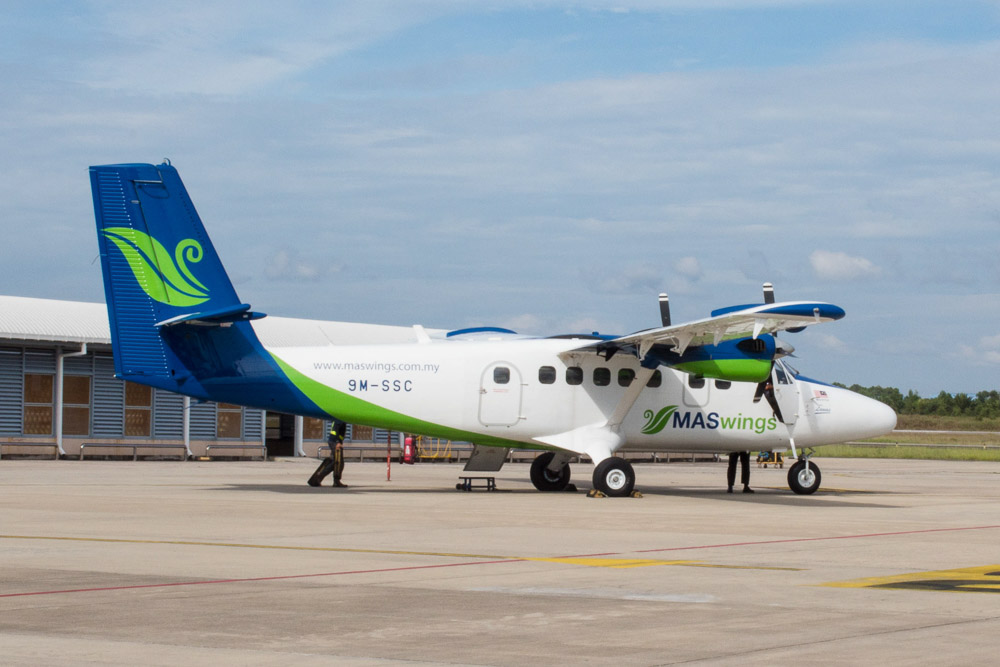
Final Thoughts
As with the outbound flight, this flight out of Marudi was a unique experience that provided a brief window into the transport situation in northern Sarawak. While it wasn’t the most comfortable flight I’ve had, MASwings’ no nonsense level of service on my two flights of the day definitely got the job done well enough.

Comments
3 responses to “Malaysia’s Rural Air Service: Flying from Marudi to Miri on a MASwings Twin Otter”
[…] Malaysia’s Rural Air Service: Flying from Marudi to Miri on a MASwings Twin Otter […]
[…] MASwings flight MH 3569 from Marudi to Miri […]
[…] The return flight MASwings MH 3569 from Marudi to Miri […]